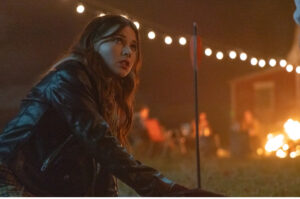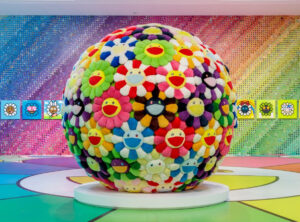In a cinematic landscape littered with endless reboots, nostalgia bombs, and over-processed CGI monsters, Eli Craig’s return to the director’s chair feels like a much-needed dose of tonal clarity. Best known for his genre-subverting cult classic Tucker and Dale vs. Evil, Craig’s latest offering, Clown in a Cornfield, arrives not simply as another horror romp but as a scalpel aimed straight at the jugular of modern youth culture. A socially-charged slasher decked in greasepaint and barbed irony, the film doesn’t just aim to scare—it diagnoses, dissects, and then dances gleefully in the absurd wreckage.
At the center of this blood-soaked satire is the killer clown—a grotesque figure that has reentered the cultural bloodstream with alarming frequency. And Eli Craig, ever the wry observer, is less interested in the archetype’s primal fright factor and more fascinated by why, exactly, Gen Z can’t seem to look away.
Clowning in Crisis: The Rise of Red-Nosed Terror
“Gen Z has just gone from one mind-boggling absurdity to the next,” Craig told IndieWire, reflecting on a generational psyche molded by climate anxiety, economic precarity, political chaos, and a perpetual feed of digital delirium. “The scary clown,” he explains, “is no longer just a monster. It’s a symbol of the chaos that everyone’s pretending doesn’t exist.”
In Clown in a Cornfield, the titular menace isn’t just a slasher movie villain—it’s a metaphor for small-town performativity, rural conservatism, and the violent repression of youth-led progressivism. Loosely adapted from Adam Cesare’s YA horror novel of the same name, Craig’s take layers social commentary beneath every honk and chainsaw rev. The clown, named Frendo, doesn’t stalk victims aimlessly. He targets “wrong-thinkers,” idealists, and those refusing to conform—precisely the kinds of kids Craig believes are shaping tomorrow’s fractured society.
This is not an isolated artistic phenomenon. In recent years, clowns have undergone a cultural rehabilitation—not as figures of joy, but as instruments of critique. From Joker to Terrifier, from Pennywise’s modern revival to the viral “clown sightings” of the mid-2010s, the clown has become a vessel through which societies air their darkest contradictions.
A Genre Veteran Steps Back In
Eli Craig’s Tucker and Dale vs. Evil (2010) was a sleeper revelation—a film that lovingly skewered horror clichés while offering a warm-hearted narrative beneath the blood. The film flipped the script on “hillbilly horror,” turning the typical redneck murderers into misunderstood protagonists. That same genre literacy and empathy for outsiders pulses through Clown in a Cornfield, albeit with a much sharper edge.
Craig is no longer just reversing tropes for comedy. In this new film, he’s wielding them like scalpels.
Set in the fictional town of Kettle Springs, Missouri—a decaying caricature of Middle America—Clown in a Cornfield follows Quinn Maybrook, a teenager who moves to town with her father after a personal tragedy. What begins as typical fish-out-of-water teen drama quickly descends into carnage when the town’s mascot, a retired circus clown named Frendo, returns as a homicidal avatar of moral righteousness. Teens are punished for vaping, protesting, questioning authority—anything deemed “disrespectful” by the adult power structure.
Craig uses the horror framework not to mock these themes but to channel them. “It’s easy to forget how many horror films are fundamentally conservative,” he explains. “The teens who have sex, drink, disobey—they’re the ones who die first. I wanted to turn that on its head. What if the killer is the conservative?”
Aesthetic Duality: Americana and Absurdity
The film’s visual identity teeters between Norman Rockwell nostalgia and Lynchian distortion. Rows of golden corn stretch across Cinemascope frames while Frendo—part Ronald McDonald, part Fox News id—lurches through the fields, facepaint cracked and outfit scorched. The violence is brash and unapologetic, but rarely pornographic. Craig walks a fine line between homage and hysteria, constantly reminding viewers that horror is, above all, a performance.
This theatricality is intentional. “We’re living in an age where everything’s a spectacle,” Craig notes. “Politics, mental health, identity—it’s all played out online, like a show. So why wouldn’t horror reflect that?”
Indeed, the characters in Clown in a Cornfield live partially online, documenting their trauma and reactions in real-time. The tension between digital identity and lived experience is one of the film’s sharpest undercurrents. In one standout scene, a teenager’s livestream of the unfolding massacre is met with laugh-reacts and skepticism from viewers who assume it’s just another viral prank. It’s a brutal, brilliant commentary on desensitization and the collapse of reality into content.
Gen Z Horror: From Final Girls to Found Footage
Craig’s commentary on Gen Z as both protagonist and audience runs deeper than just aesthetics. He sees in them a complex contradiction—radically empathetic yet numb, hyper-informed yet emotionally volatile, demanding systemic change while uncertain how to survive in the system they’ve inherited.
“They’ve inherited a world full of broken institutions,” Craig says, “and horror has always been about institutional collapse. In the ’80s, it was suburbs and serial killers. In the 2000s, it was terrorism and torture. Now it’s about systemic failure—climate, governance, truth itself. That’s why horror’s resonating again.”
This, in many ways, explains the pivot from supernatural hauntings to slasher reimaginings. Ghosts don’t frighten Gen Z—inequity, fascism, and performative civility do. The clown, rebranded, becomes a living metaphor: whimsical on the outside, malignant at its core.
In Clown in a Cornfield, the survivors aren’t merely final girls—they’re digital natives, climate activists, queer teens, and marginalized voices refusing to be silenced. The kills are shocking, yes, but the greater horror is found in the normalization of extremism, the town’s casual shrug at curfews and censorship, the eerie silence of adults who believe control equals safety.
Beyond Satire: What Lies Beneath the Makeup
While the film functions as a biting satire, Craig never slips into nihilism. For all its cynicism about adults and systems, Clown in a Cornfield ultimately invests in youth resilience. The climax hinges not on brute force but on collective resistance—teenagers organizing, strategizing, and fighting back as a unified front. It’s a cathartic fantasy of youthful agency in a world where adults have failed.
And yet, even in victory, the wounds remain. Craig doesn’t let his characters off easily. Survivors are scarred—visibly, emotionally, and existentially. “There’s no reset button,” he admits. “I wanted to make a movie that ends like real life does—changed, damaged, but still moving forward.”
This narrative choice elevates the film beyond its slasher roots. It joins a growing canon of horror that refuses to compartmentalize trauma, treating fear not as a fleeting emotion but as a structural reality. The clown, then, is not simply a killer—it’s a specter of unresolved generational trauma, a symbol of the carnival-like absurdity Gen Z has been forced to normalize.
Legacy, Laughter, and the Politics of Fear
Eli Craig has always had a knack for making us laugh at our fears without trivializing them. With Clown in a Cornfield, he sharpens that talent, creating a film that entertains while ruthlessly interrogating the American moment. The humor, when it arrives, is grim and knowing. It’s a teenager cracking jokes through tears. It’s the bitter comedy of survival.
In choosing the clown as his vessel, Craig joins a lineage of artists—from Stephen King to Jordan Peele—who understand that horror is most effective when it reflects us back to ourselves in grotesque form. The clown may wear the face of a joke, but beneath it is something far more ancient and honest: our fear of systems that pretend to nurture us while quietly consuming us whole.
Closing Note: Why Now, Why Us
The horror genre has never been more democratized. With platforms like TikTok, YouTube, and micro-budget indie films shaping cultural touchstones, the gatekeepers have shifted. Craig’s film, while studio-backed, hums with the energy of DIY rebellion. It speaks to a generation fluent in memes and misrule, who understand that horror doesn’t have to be prestigious to be profound.
Clown in a Cornfield is not just a movie—it’s a dispatch from the edge of reason, a twisted fairytale for the disillusioned, and a manifesto for horror’s future: socially conscious, visually daring, and unapologetically political.
Because sometimes the only way to laugh at the madness is to paint your face, grab a chainsaw, and head for the cornfields.
No comments yet.








